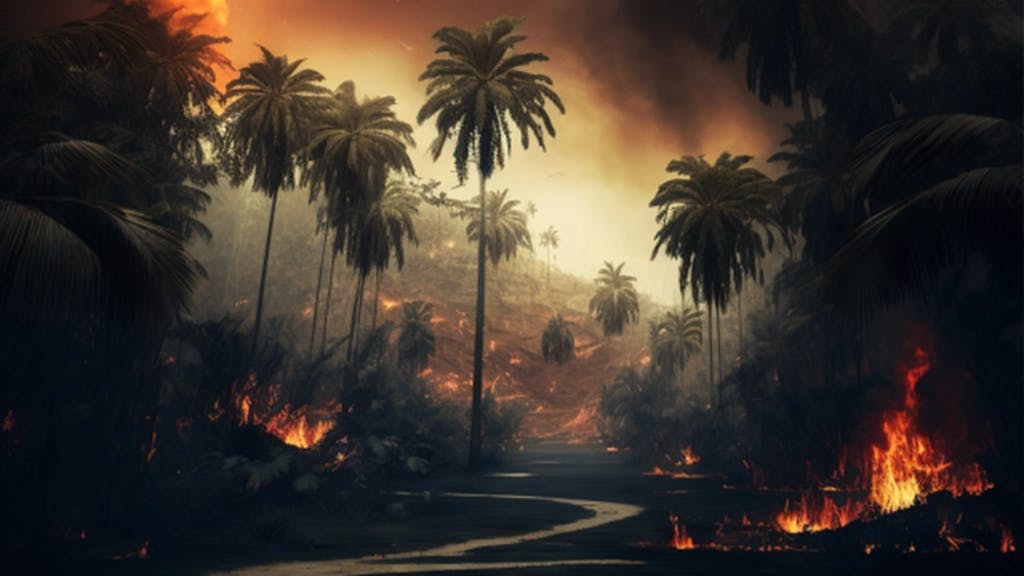Wildland fires in Brazil: an environmental catastrophe
umgrauemeio - Time de Marketing
17/03/2023

Forest fires have been one of the main concerns in Brazil, especially in recent years. The fire that consumes Brazilian forests can be caused by various reasons, but burnings are the main cause. Although the terms "burnings" and "fires" may seem synonymous, there is a crucial difference between them. Burnings are an agricultural technique that consists of burning the vegetation of an area to prepare it for planting, while fires are natural or criminal disasters that can occur in forests, urban or rural areas.
In Brazil, illegal burnings have been one of the main causes of forest fires, resulting in incalculable environmental, economic, and social damage. The toxic smoke released by fires can cause public health problems, while the loss of biodiversity can have negative long-term effects.
To deal with this problem, there must be joint and coordinated actions from all sectors of society, including the state, companies, and the general population. Only then will it be possible to reduce the number of burnings and forest fires, preserving nature and protecting people's health and well-being.
In this article, we will discuss the magnitude of the burning problem, the inefficiency of the state in dealing with it, and the main damages caused to society.
The size of the problem
Burnings are a chronic problem in Brazil, especially in the Amazon region. According to the National Institute for Space Research (INPE), in 2020, more than 222,000 fire hotspots were registered throughout the country, an increase of 12.7% compared to 2019. Of this total, more than 100,000 occurred in the Amazon, an increase of 16.6% compared to the previous year.
These numbers are alarming and show the seriousness of the problem of illegal burnings in Brazil. In addition to causing irreparable environmental damage, burnings also affect public health, with the release of toxic gases that can trigger respiratory and cardiovascular diseases.
Furthermore, the economic and social losses are significant, especially in regions where burnings are more frequent. The environmental degradation resulting from burnings can lead to loss of biodiversity, reduced soil quality, and scarcity of water resources, affecting agricultural and livestock production.

Inefficiency of the Brazilian State
Slash-and-burn is an old and traditional agricultural technique, which involves burning the vegetation in an area to prepare it for planting. The idea is to eliminate weeds, reduce vegetation density, and facilitate the entry of sunlight into the soil. However, this practice can easily get out of control and turn into a forest fire, especially in regions with dry and hot climates, low humidity, and strong winds.
Unfortunately, the inefficiency of the Brazilian State in dealing with slash-and-burn has been one of the main factors for the increase of forest fires in the country. The lack of resources, technical capacity, and, mainly, political will has been a major obstacle in the prevention and combat of slash-and-burn.
In addition, the lack of support for controlled burns is also a major issue. This technique can be used safely and responsibly, provided that necessary precautions are taken, such as constant monitoring of the fire and the use of safety equipment. However, many farmers do not have access to these resources.
Another factor contributing to the increase of burns in Brazil is the dismantling of environmental agencies in recent years. With reduced resources and staff, the monitoring and enforcement of these illegal practices have become more difficult, allowing some farmers to continue using environmentally harmful methods.
However, there are ongoing initiatives that seek to modernize agricultural practices and reduce the impact of burns. The development of new technologies, such as drones and remote sensors, can help monitor at-risk areas and detect fire outbreaks more quickly and efficiently. In addition, there are training programs for farmers that teach more sustainable and safe techniques, such as integrated fire management and pest and disease control.

Environmental and socioeconomic damage
Forest fires are a problem that affects not only the environment but also the health and quality of life of people. When the flames reach forests and preservation areas, they cause the degradation of the ecosystem, affecting biodiversity, soil, and air quality.
In addition, the smoke and particles released by the fires can harm health, especially of people with respiratory diseases. Air pollution can increase cases of asthma, bronchitis, and even lung cancer.
OThe impacts can also affect the economy, especially in regions affected by forest fires. Tourist areas, for example, may suffer from the loss of natural attractions and increased pollution. Agriculture is also affected by soil degradation and biodiversity reduction, leading to a decrease in productivity and farmers' profits.
Therefore, the wildfires have direct consequences on society as a whole, affecting the environment, health, and economy. It is essential that effective measures be taken to combat this problem, protect conservation areas, and raise awareness among the population about the importance of adopting more sustainable practices.
To solve the problem of wildfires, there must be effective commitment from the government, civil society, and private sector in concrete prevention and combat actions. It is urgent to invest in technologies and equipment for monitoring and combating fires, as well as promoting environmental education to raise awareness about the importance of preserving the environment.
Together, we can make a difference in the fight against wildfires and ensure a more sustainable future for everyone.